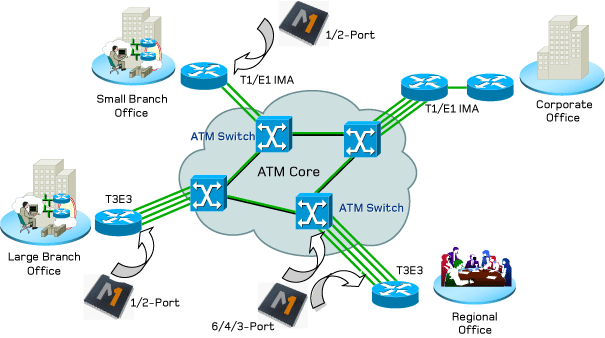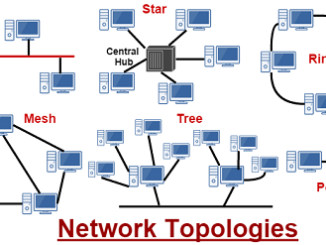
Welcome to the fourth volume of module 1 of Comptia Network+ Tutorial where you are going to learn about Switching and routing functioning, IGP vs. EGP and Port Monitoring.
Here we are going to discuss the purpose and properties of routing and switching. With the help of these we can connect devices to a network. With switching, you can connect a device to the same network whereas routing allows a device to connect to a different network.
Switching
When data is needed to be transmitted afar a local area, or in LANs and MANs, the communication is performed by transmitting data through a network of intermediate switching nodes from source to destination. The switching nodes provide a medium to carry the data from one node to another so that they reach their destination.

Fig. – Switching
In the above figure, Host 1 and Host 2 want to communicate and are referred to as stations. These stations may be telephones, terminals, computers or other communicating devices. The stations and all the nodes collectively form a communication network. When the data to be transmitted enters the communication network, it is switched from node to node. The data may take any path available like Node A then Node E and then Host2 or Node A, Node D, Node G, Node H and then Host 2.
For wide area switched networks, there are two different technologies: circuit switching and packet switching.
Routing
Switches create a network while routers connect networks. The process of selecting a particular path from multiple available paths for data to reach the destination is known as routing. Devices called routers are used in the process. A default path is set in the routers but in case that path cannot be used for communication, the router decides another path on the basis of different factors like hop count, bandwidth, metric, prefix-length and delay. Routers operate at Layer 3 of the OSI Model (Network layer). It maintains a table called Routing Table and uses the routing table to determine the route to the destination network.
When deciding the path for data a router must select the best possible path. For this a routing algorithm is used by the router and a routing metric is calculated which decides whether a particular path needs to be selected or rejected for the communication process. There are various techniques and methods based on the routing algorithms based on certain parameters like, hop count, path reliability, path speed, load, bandwidth, latency and maximum transmission unit.

Fig. – Routing / Image Courtsey: www.rfwireless-world.com
Routing can be done statically or dynamically. In static routing the router has manually configured routing tables. But static routing can be suitable for small networks. For large networks, dynamic routing is more appropriate. Based on the real-time logical network layout changes, the routing protocol creates a dynamic routing table. Some of the most popular routing protocols are Routing Information Protocol (RIP) and Open Shortest Path First (OSPF) protocol.
IGP vs. EGP
IGP (Interior Gateway Protocols) are used when the data packets are to be transmitted when both the networks belong to same autonomous system. For this both the autonomous systems should have the same numbers. Examples of Interior Gateway Protocol (IGP) Routing Protocols are Interior Gateway Routing Protocol (IGRP), Routing Information Protocol (RIP), Open Shortest Path First (OSPF) and Intermediate System to Intermediate System (IS-IS).
EGP (Exterior Gateway Protocols) are used when the data packets are to be transmitted when both the networks belong to different autonomous systems. Border Gateway Protocol (BGP) is one EGP protocol. EGP is usually used in the internet to exchange routing table information.
Port Mirroring
Port mirroring is a network monitoring technique in which the network packets are copied and send as input from a port to another port of a monitoring computer/switch/device. It is also referred to as switched port analyser (SPAN) and roving analysis port (RAP). It is implemented in VLANs (Virtual local area networks), LAN (Local area networks) and WLANs (Wireless local area networks) to fend off an attack or as a diagnostic tool and debugging feature. It allows the network administrator to monitor network traffic with an external network analyzer. In this a copy of each incoming and outgoing packet is forwarded to a specific port. A specific port is assigned to which the packets are copied.



